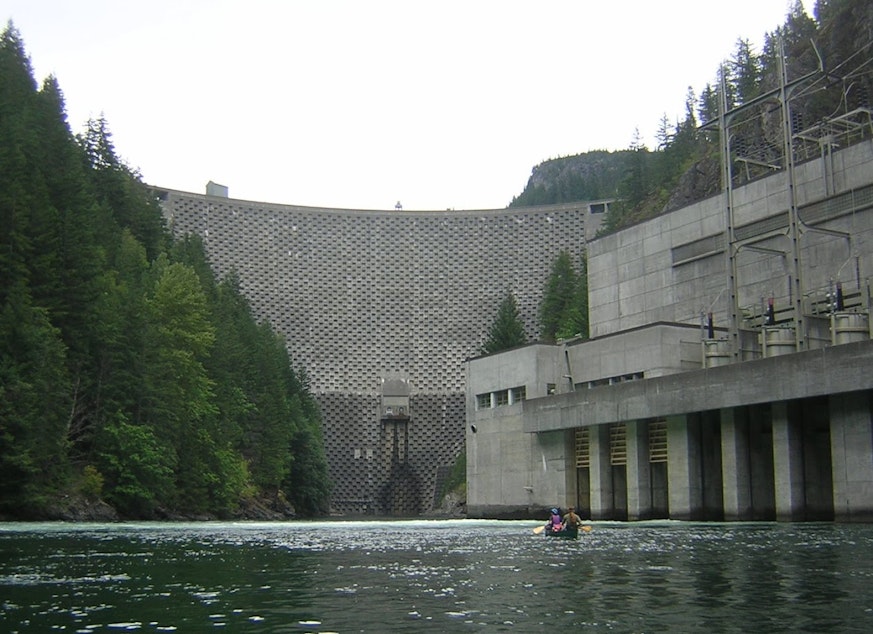Can fish and dams coexist on the Skagit River? New plan may be first step

Seattle City Light has released a new plan for managing three hydroelectric dams on the Skagit River. The dams provide 20% of Seattle’s electric power and have been the subject of a series of lawsuits by tribes, who argue that the dams stop salmon from flourishing.
On the day they re-applied for a new federal license that would last decades, the utility announced how they’ll work with federal, state, and tribal partners as they navigate the next few decades generating power from the dams.
Chris Townsend, Seattle City Light's director of natural resources and licensing, says the utility is making space for potential changes in the future with its new application to federal regulators. That includes impacts from climate change.
"We don't know everything right now that we could possibly know about how this natural system will respond over the next 50 years, and so it's a flexible, adaptive approach,” he said.
One of those possible changes is the idea of potentially trapping and transporting fish around the dams. A lot of studies need to happen for that idea to become a reality, but it could involve building a new road to transport the fish from below to above the dams.
For Scott Schuyler, who has worked on policy for the Upper Skagit Tribe for the past 29 years, the new Seattle City Light plan is a good first step. Schuyler said ultimately the tribe wants the river system returned to its most natural state, without the dams.
Sponsored
"And we know we'll never let that objective go," Schuyler said. "But, currently, we are moving in the right direction. And we're very pleased but you know, we have a lot of work that needs to be done."
This move by the utility could also affect ongoing lawsuits.
Seattle City Light is also looking to develop a fish program that takes into account aspects of salmon health and habitat like water quality, spawning beds, and sources of food, as well as how the utility's work affects the watershed.
Before all this can happen though, federal regulators need to approve Seattle City Light’s proposal for managing the three Skagit River dams.




